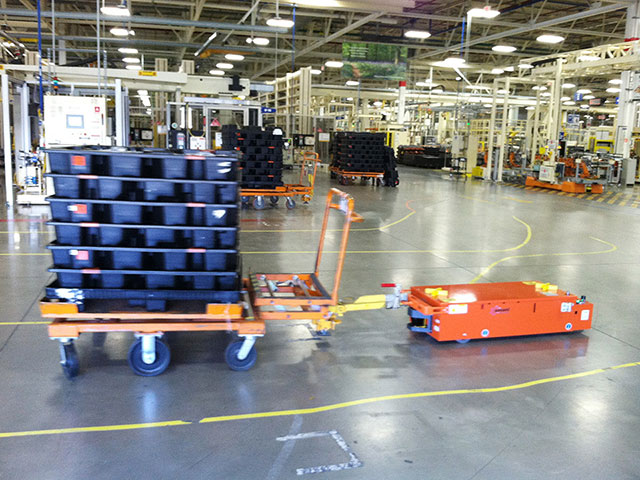The logistics system is designed to be based on the efficiency and simplicity of the entire process, with the goal of maximizing the benefits of the customer through effective solutions. Some suggestions were made for the rational design strategy of the AGV system.
1. Consider the performance characteristics of the AGV and consider the structure of the system. The AGV has the functions of walking, retreating, turning, etc., but because it is suitable for cross-regional design and crossover, the speed is basically controlled below 60 m/min.
In a simple transport path of about 150 meters, its transport capacity is only about 15 per hour, which is not efficient compared to the rail transport STV (up to 250 m / min). Despite breakthroughs in battery technology, such as a company's patented product with a discharge rate of 1:10, its smart charging mode and battery life are the main factors that reduce efficiency and increase cost. Therefore, the mode of transportation between adjacent production processes is not an advantage of AGV.

2. Consider the cost-effective system of AGV. In the automotive, steel manufacturing, printing, papermaking and other industries, most of the products are extra heavy, the material flow is not large, the material storage area and the processing area have a certain distance. The use of AGVs will be a cost-effective solution compared to the use of large tonnage forklifts and corresponding operators, without affecting the flow of people and other logistics lines, and in the convenience and safe handling of materials.
Similarly, in the food, pharmaceutical, and tobacco industries, the organic integration of a large number of decentralized manufacturing equipment and the flexibility of equipment layout changes are also the strengths of AGV. AGV is the most suitable transportation tool for special industries such as liquid crystal production, electronic clean environment and hazardous working environment.
At present, the application of domestic AGV is limited to several industries with strong economic strength, but this is only the middle point of development and change. When the industrial scale and logistics integration of the above-mentioned related industries reach a certain level, the application scope and form of AGV will be further expanded.
 中文
中文 English
English
